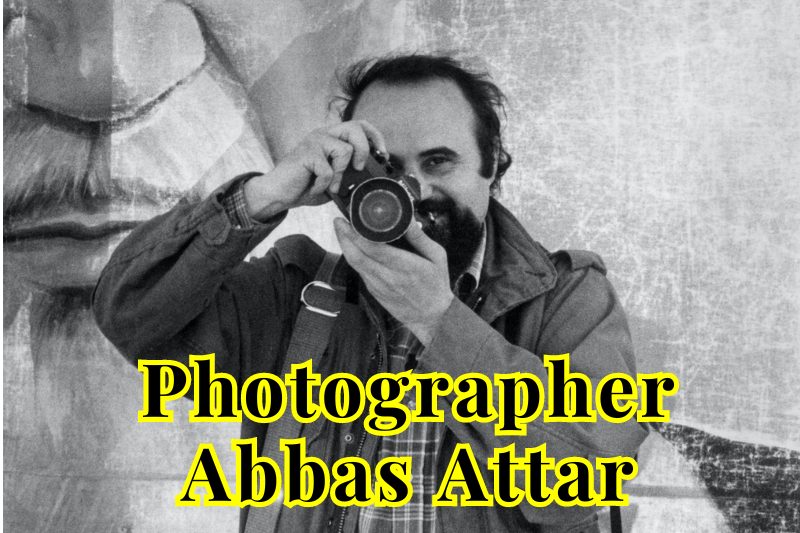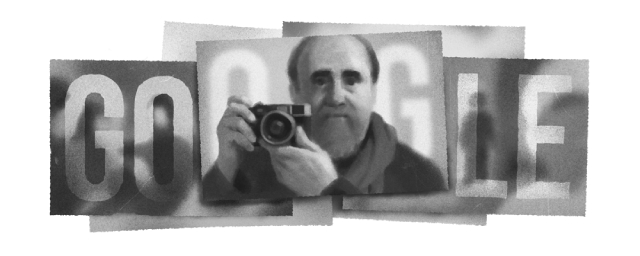Festivals & Events
Interesting Facts about Abbas Attar, a French-Iranian Journalist and Photographer

Google Doodle honors the 80th birthday of Abbas Attar, a French-Iranian journalist and photographer whose photojournalistic work documented wars, religious persecution, and the plights of communities around the world. His goal was to capture the “suspended moment” by using his signature black-and-white photography to document societies in conflict. Abbas was born in southeast Iran on March 29, 1944. Here are some interesting and amazing facts about Abbas Attar you should need to know.

Who was Abbas Attar?
Birth date: 29 March 1944
Birthplace: Khash, Sistan and Baluchestan Province, Iran
Died on: 25 April 2018 (aged 74)
Death place: Paris, France
Nationality: Iranian
Spouse: Melisa Teo (m. 2018)
25 Interesting Facts about Abbas Attar
- Known by his pen name Abbas, Abbas Attar (عباس; عباس عطار) was an Iranian photographer well-known for his photojournalism in the 1970s in South Africa, Vietnam, and Biafra, as well as for his extensive essays on religion in later years. He was a member of Gamma from 1974 to 1980, Sipa Press from 1971 to 1973, and Magnum Photos from 1981 onwards.
- Although not much is known about Abbas’s early years, he developed a passion for photography before relocating to Paris. He began to concentrate on reporting on social developments in developing countries.
- Iranian-born photographer Abbas Attar focused his career on documenting the political and social landscape of the developing southern countries.
- His major works, which include essays on apartheid and the wars and revolutions in Biafra, Bangladesh, Ulster, Vietnam, the Middle East, Chile, Cuba, and South Africa, have been published in international magazines since 1970.
- Throughout a six-decade career, he covered wars and revolutions in Bangladesh, Vietnam, Bosnia, the Yom Kippur War 1973, Biafra, Chile, Cuba, and South Africa during the apartheid era. He also pursued a lifelong interest in religion and its intersection with society.
- Abbas Attar covered the Iranian Revolution from 1978 to 1979. This groundbreaking study documenting the emergence of religious fanaticism was included in the influential book Iran: the Confiscated Revolution.
- He documented the Iranian revolution with photos between 1978 and 1980. Following a voluntary 17-year exile, he returned in 1997.
- His book iranDiary 1971–2002 (2002), which was written and photographed as a personal diary, offers a critical interpretation of its history.
- Abbas Attar traveled around Mexico taking pictures of the country from 1983 to 1986, documenting it as though he were writing a book.
- Following the revolution, Abbas traveled throughout Mexico to pinpoint his own aesthetic. Return to Oapan and Return to Mexico, Journeys Beyond the Mask, are books he photographed as if he were a novelist writing about the same country.
- His travel diaries and an exhibition, Return to Mexico, Journeys Beyond the Mask (1992), assisted him in defining his photographic aesthetics.
- Abbas continued to document the world’s major religions in the years that followed, beginning in 1987 with the radical Islam movement’s comeback. After 9/11, this work gained even more significance, inspiring him to document its aftermath throughout a seven-year journey through sixteen Islamic nations.
- Following that, Abbas Attar photographed Buddhism, Hinduism, Christianity, Animism, and Judaism at the time of his death. In his foresighted research, he examined how religious fanaticism was displacing political ideologies as the primary cause of conflict globally.
- Abbas Attar photographed the spread of Islam from Xinjiang to Morocco between 1987 and 1994.
- His 1994 book and exhibition Allah O Akbar, a journey through militant Islam, highlights the conflicts that exist inside Muslim societies as they strive to reconcile their desire for modernity and democracy with their mythical past. The book gained more notoriety following the September 11 attacks of 2001.
- Christianity served as a symbol of the resilience of Western civilization when the year 2000 was recognized as a significant event in the global calendar. A photographic journey and traveling exhibition titled Faces of Christianity (2000) explored Christianity as a political, ritualistic, and spiritual phenomenon.
- Abbas Attar worked on animism from 2000 to 2002. The study examined the reasons behind the strong resurgence of irrational rituals in a world dominated by science and technology. On the first anniversary of the September 11 attacks, he gave up on this project.
- His book, In Whose Name? The Islamic World after 9/11 (2009) is an undertaking spanning seven years across sixteen nations: Opposed by governments that pursue them ruthlessly, the jihadists lose many battles, but with the “creeping islamisation” of all Muslim societies, are they not winning the war of ideas?
- Abbas explored the Buddhist world between 2008 and 2010, taking pictures for his book Les Enfants du lotus, voyage chez les bouddhistes (2011) while maintaining the same skeptical eye. He started a similar long-term Hinduism project in 2011 and finished it in 2013.
- Abbas Attar was working on a global encyclopedia of Judaism before his death.
- Days before Abbas passed away, director Kamy Pakdel finished filming Abbas by Abbas (2020). Pakdel was also the art director for several of Abbas’s books. When asked in the movie how he achieved a certain shot, Abbas says, “Let the photos live their lives and keep their mystery.”
- On April 25, 2018, Abbas Attar died in Paris at the age of 74.
- One of the best photographers of all time, Abbas was a veteran member of a prestigious photo agency with work published around the world.
- Future generations will be motivated to strive for clarity and honesty to better understand our world through his humanistic images, which will endure. as well as its inhabitants.
- On March 29, 2024, Google featured a Google Doodle on its homepage to celebrate Abbas Attar’s 80th Birthday.
-
Health4 weeks ago
Back to Roots: Ayurveda Offers Natural Cure for Common Hair Woes
-

 Tech4 weeks ago
Tech4 weeks agoFrom Soil to Silicon: The Rise of Agriculture AI and Drone Innovations in 2025
-

 Science2 weeks ago
Science2 weeks agoJuly Full Moon 2025: Everything You Should Need to Know, When and Where to See Buck Moon
-

 Tech4 weeks ago
Tech4 weeks agoAdobe Firefly App Now Available on iOS and Android Phones to Create AI Images and Videos Anywhere
-

 Sports4 weeks ago
Sports4 weeks agoFIBA 3×3 World Cup 2025: Full Schedule, Preview, and How to Watch
-

 Gadget4 weeks ago
Gadget4 weeks agoThings to Know about Samsung Galaxy S26: What’s New and What’s Next
-

 Apps3 weeks ago
Apps3 weeks agoWhat’s New Features Coming to Apple Music App in iOS 26
-

 Sports2 weeks ago
Sports2 weeks agoPrefontaine Classic 2025: Full Schedule, Preview, Field, Events and How to Watch Diamond League Eugene Live























